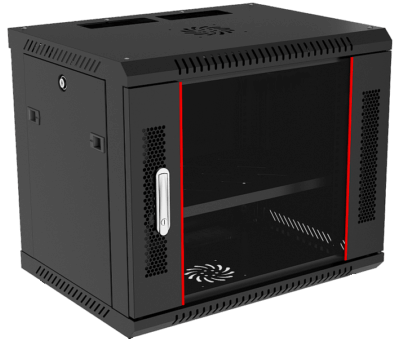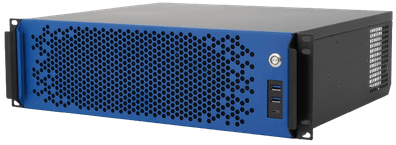Introduction
Home infrastructure refers to the essential systems and structures within a home that support its daily functions and ensure comfort, safety, and connectivity for its occupants. This encompasses a wide range of components, both physical and technological, that work together to create a well-functioning living environment. For the scope of this paper, we will only refer to the following elements:
Internet and Networking: In today’s digital age, robust home networking infrastructure is essential. This includes internet connectivity (wired and wireless), routers, switches, modems, and network cabling. A strong network supports various smart devices, home offices, entertainment systems, and communication needs.
Security Systems: Home security infrastructure includes alarm systems, surveillance cameras, motion detectors, smart locks, and other devices designed to protect the home and its occupants from intrusions and emergencies.
Smart Home Technology: Increasingly common in modern homes, smart technology infrastructure includes interconnected devices and systems that can be controlled remotely or automated. This encompasses smart lighting, thermostats, security systems, appliances, and home assistants.
Energy Management: This involves systems and devices that manage and optimize energy consumption, such as solar panels, energy-efficient appliances, and smart meters. Efficient energy management can reduce utility costs and environmental impact.
Home Entertainment Systems: These systems include home theaters, audio systems, gaming consoles, and streaming devices, all of which rely on a solid infrastructure for optimal performance.
Home Automation Systems: Automation systems allow for the integration and control of various home functions, such as lighting, climate control, and security, through centralized interfaces or voice commands.
Most of these functions can be consolidated into a central location, usually using a Network Distribution Rack.
Network Distribution Rack

A network distribution rack, commonly found in commercial settings, is increasingly becoming a valuable asset in modern homes. As technology advances and the number of connected devices in households grows, maintaining an organized and efficient network setup becomes essential. Here are several reasons why a network distribution rack is beneficial in a home setting:
Organization and Space Management: A network distribution rack helps organize various networking equipment such as routers, switches, modems, and servers. By keeping these devices in a single, centralized location, you can avoid clutter and make better use of your space.
Improved Network Performance: Properly mounted and ventilated networking equipment can operate more efficiently and with reduced risk of overheating. This can lead to better network performance and longevity of your devices.
Enhanced Security: A dedicated rack allows for secure storage of network equipment. It can be locked to prevent unauthorized access, ensuring that your network remains safe from tampering or accidental disconnections.
Ease of Maintenance and Troubleshooting: With all networking devices neatly organized in one place, identifying and resolving issues becomes much simpler. This streamlined setup makes it easier to perform maintenance tasks, upgrade equipment, and manage cables.
Scalability: As your network grows with the addition of smart home devices, security systems, and multimedia setups, a network distribution rack provides the scalability needed to accommodate new equipment without a complete overhaul of your existing setup.
Professional Appearance: For those who value aesthetics, a network distribution rack can provide a clean, professional look to your home office or tech area, demonstrating a well-managed and sophisticated network infrastructure.
A network distribution rack is not just a luxury but a practical solution for modern homes with growing technological needs. It offers organization, efficiency, security, and scalability, making it an essential component for anyone looking to optimize their home network.
Home Server(s)

A “home server” (as a general concept), once considered a luxury reserved for tech enthusiasts, is now becoming an increasingly practical and valuable addition to many households. As our digital lives expand, the benefits of having a dedicated home server (or servers) are numerous. There are several compelling reasons to consider setting up a home server:
Centralized Data Storage: A home server allows for centralized storage of all your important files, including documents, photos, videos, and music. This centralization makes it easier to manage, back up, and access your data from any device within your home network. (This function is commonly provided by a dedicated Network Attached Storage (NAS))
Media Streaming: With a home server, you can store and stream private media content to various devices throughout your home. Whether it’s watching movies on your TV, listening to music on your stereo system, or accessing your photo library on your tablet, a home server ensures seamless media streaming.
Enhanced Security and Privacy: By hosting your own server, you gain greater control over your data’s security and privacy. Unlike cloud services, where your data is stored on third-party servers, a home server keeps your information within your own network, reducing the risk of unauthorized access and data breaches. This does not negate the value of cloud based storage of your precious data - but with a home server you can access the data even when your internet connection is down. Plus, you can (and should) leverage the cloud service to backup your data in an encrypted format.
Backup and Redundancy: A home server can be configured to automatically back up your computers and devices, ensuring that your important data is protected against hardware failures, accidental deletions, or other unforeseen issues. This redundancy provides peace of mind, knowing that your files are safe.
Home Automation and Smart Home Integration: A home server can act as the central hub for your smart home devices, allowing for better management and integration of various systems such as lighting, security, climate control, and more. This centralized control enhances the efficiency and functionality of your smart home setup.
Remote Access: With the right configuration, a home server allows you to access your files and applications remotely. Whether you’re at work, traveling, or simply away from home, you can securely connect to your home server to retrieve documents, stream media, or manage smart home devices.
A home server offers a wide range of benefits and is an investment that can greatly enhance the functionality, convenience, and security of your home network, making it a worthwhile consideration for modern households.
Ideal Locations1
When setting up a distribution rack and a home server in a home network, several factors need to be considered, especially concerning noise, heat, fire, and theft. Here are some guidelines to help you choose the best location:
Distribution Rack
Location:
Dedicated Room: If you can intercede at the time of architectural design then allow for a small “walk in” space the will be a dedicated technology infrastructure room. If not, than a common space to repurpose is the space under the staircase.
Garage: Many homes use a space in the garage to consolidate network patching and this space can be used quite effectively to host a small, high mounted, wall rack. You will however need to consider ventilation and heat management.
Home Office: A dedicated home office or study would also suffice to host your infrastructure. You would however need to account for the heat and noise generated by the devices.
Not:
Closet: Closets typically are small and sealed (i.e. no airflow), which can lead to over-heating of your equipment.
Utility Room / Laundry Room: These areas are typically used for high heat and high humidity use, both of which would be detrimental to your equipment.
Considerations:
Ventilation: Ensure the room has adequate ventilation or consider adding an exhaust fan to help dissipate heat. Equipment in enclosed spaces can overheat, especially in hot climates like Sydney’s summers.
Air quality: Ventilation needs to account for the quality of the air used. Dusty environments are inimical to the health of your equipment. Air inflow should have the appropriate filtration to ensure that dust does not clog up the systems.
Heating & Cooling: Typically equipment is designed to run just fine at “room temperature” (around 20–22 °C (68–72 °F)). For any environments over 25 °C (77 °F), you’d need to consider active cooling2. Inversely, and although “the cooler the better” rule applies, too cold can cause problems to when combined with humidity.
Humidity Control: Careful consideration should be given to the probability of reaching the dew point3 of the space, since this would mean condensation within the equipment. Obviously, water and electronics do not make for healthy (or even safe) environments.
Access: Choose a location that is easily accessible for maintenance but not in a high-traffic area to avoid accidental damage.
Home Server ∨ Network Switch
Location:
Typically a server and/or switch should be housed in a distribution rack. In the absence of one, then you may consider:
Home Office: If noise is not a major concern and you need regular access to the server, placing it in your home office can be convenient.
Dedicated Server Room: If you have the space, converting a small room into a dedicated server room can provide an ideal environment for your server.
Garage: An insulated and well-ventilated garage can be a good location if it’s protected from extreme temperatures and humidity.
Considerations:
Noise: Servers can be noisy due to cooling fans. Choose a location where the noise will not disturb daily activities.
Cooling: Servers generate significant heat. Ensure the room has proper cooling, such as air conditioning or dedicated server cooling systems. In Sydney’s summers, keeping the server cool is critical to prevent overheating.
Security: To protect against theft, install the server in a secure location. Consider a lockable rack or server cabinet, and use surveillance cameras and alarm systems if necessary.
General Tips
Fire Safety: Ensure the room has smoke detectors and fire suppression systems. Avoid placing the equipment near flammable materials. If the space is small &or constrained, they should have no flammable materials stored in them.
Power Supply: Ensure the location has a stable and sufficient power supply (invest in a 15A dedicated circuit), and - under AU compliance - must have an RCBO.
Power Quality: Uninterruptible power supply (UPS) is essential to handle power outages and fluctuations. Unexpected power outages may corrupt storage devices and lead to significant data loss. Surge protection should also be managed, but an enterprise level UPS usually manages this too.
Cable Management: Plan for efficient cable management to keep the setup tidy and reduce the risk of accidental disconnections or damage.
Summary
For most homes, a well-ventilated basement, utility room, or dedicated closet space can be ideal for the distribution rack. For the home server, consider a home office, dedicated server room, or insulated garage, ensuring proper cooling and security measures are in place. By carefully considering noise, heat, fire safety, and security, you can create a reliable and efficient home network setup.
- Ideal may depend on circumstances not known in this context of this paper. Please consult with a professional to account for your circumstances.
- Active cooling is heat-reduction trough a energy consumptive device like a fan or an air conditioning system.
- The dew point is the temperature to which it must be cooled to become saturated with water vapor. This temperature depends on the pressure and water content of the air.